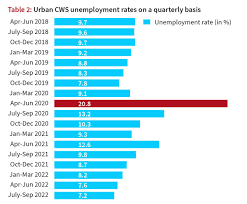
Text & Context: How unemployment is measured
CURRENT AFFAIRS FOR 07TH SEPTEMBER, 2023
Text & Context: How unemployment is measured
The Periodic Labour Force Survey in 2017 revealed the unemployment rate of India to be 6.1%. In 2022, the survey showed unemployment reducing to 4.1%.
•The International Labour Organisation defines unemployment as being out of a job; being available to take a job; and actively searching for work.
Therefore, an individual without work but not looking for a job is not unemployed.
The unemployment rate is measured as the ratio of the unemployed to the labour force.
• The labour force is defined as the sum of the employed and the unemployed. Those neither employed nor unemployed— such as students and those engaged in unpaid domestic work— are considered out of the labour force.
The situation is complicated in a developing economy, as compared to that of countries like the U.S., since decisions to search for work are constrained by social norms. Plus, measuring unemployment in India is difficult due to the informal nature of jobs. An individual may be unemployed for a week, but may have worked as a casual labourer last month, and a farmer for most of the year.
The National Sample Survey Organisation adopts two major measures for classifying the working status of individuals in India— the Usual Principal and Subsidiary Status, and the Current Weekly Status.
UPSS unemployment rates will always be lower than CWS rates because there is greater probability that an individual would find work over a year as compared to a week.
The unemployment rates are also lower in rural areas than urban.
Unemployment spiked during the lockdown quarter, but reduced thereafter.
To successfully tackle unemployment, it is important to understand how it is defined and measured in a developing economy.
